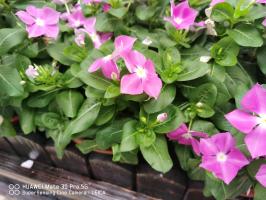Energy Conversion in Plant and Animal Cells
Both plants and animals require energy to survive, grow and reproduce. However, the way they convert food into energy is different. In this article, we will explore the process of energy conversion in plant and animal cells.
Photosynthesis in Plant Cells
Plants have a unique ability to produce energy from sunlight through a process called photosynthesis. In this process, plants convert light energy into chemical energy in the form of glucose, which is used as a source of fuel for the cell. The process of photosynthesis occurs in the chloroplasts of plant cells and involves a series of complex reactions that convert carbon dioxide and water into glucose and oxygen.
During photosynthesis, light energy is absorbed by pigments called chlorophylls, which are located in the thylakoid membranes of the chloroplasts. This energy is used to split water molecules into oxygen and hydrogen ions. The oxygen is then released into the atmosphere, while the hydrogen ions combine with carbon dioxide to form glucose. This process is called the Calvin cycle, and it utilizes ATP and NADPH produced during the light-dependent reactions to form glucose.
Cellular Respiration in Animal Cells
Unlike plants, animals do not have the ability to produce energy from sunlight. Instead, they rely on the process of cellular respiration to convert food into energy. Cellular respiration is a complex process that occurs in the mitochondria of animal cells and involves three stages: glycolysis, the Krebs cycle, and the electron transport chain.
Glycolysis is the first stage of cellular respiration, in which glucose is broken down into two molecules of pyruvate. This process occurs in the cytoplasm of the cell and does not require oxygen. The pyruvate is then transported into the mitochondria, where it undergoes the Krebs cycle. During this cycle, the pyruvate is converted into ATP, which is used as a source of energy for the cell.
The final stage of cellular respiration is the electron transport chain. In this stage, the ATP is used to power the movement of electrons through a series of proteins located in the inner membrane of the mitochondria. This process generates a large amount of ATP, which is used as a source of energy for the cell.
Conclusion
Both plant and animal cells convert food into energy in complex biochemical processes. Plants rely on photosynthesis to produce energy from sunlight, while animals use cellular respiration to convert food into ATP. Understanding these processes is essential in understanding the basic principles of life and how organisms survive and thrive in their environment.

 how many times do yo...
how many times do yo... how many planted tre...
how many planted tre... how many pine trees ...
how many pine trees ... how many pecan trees...
how many pecan trees... how many plants comp...
how many plants comp... how many plants can ...
how many plants can ... how many plants and ...
how many plants and ... how many pepper plan...
how many pepper plan...































